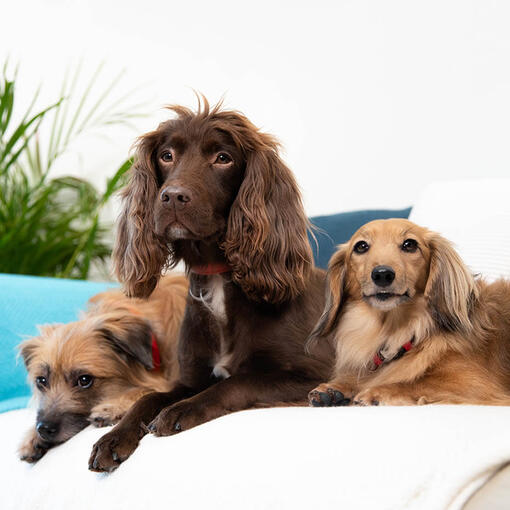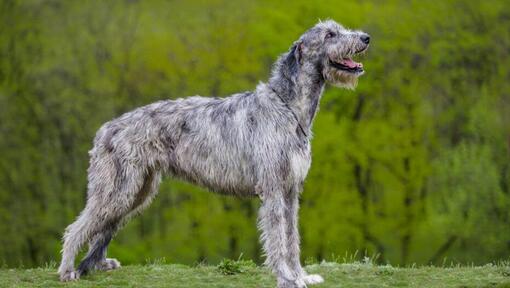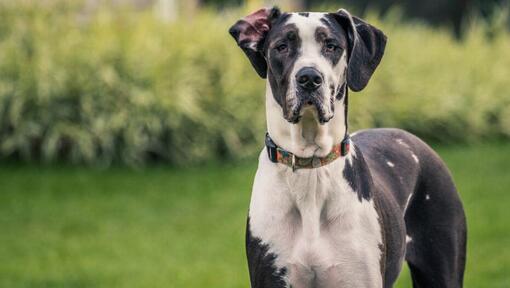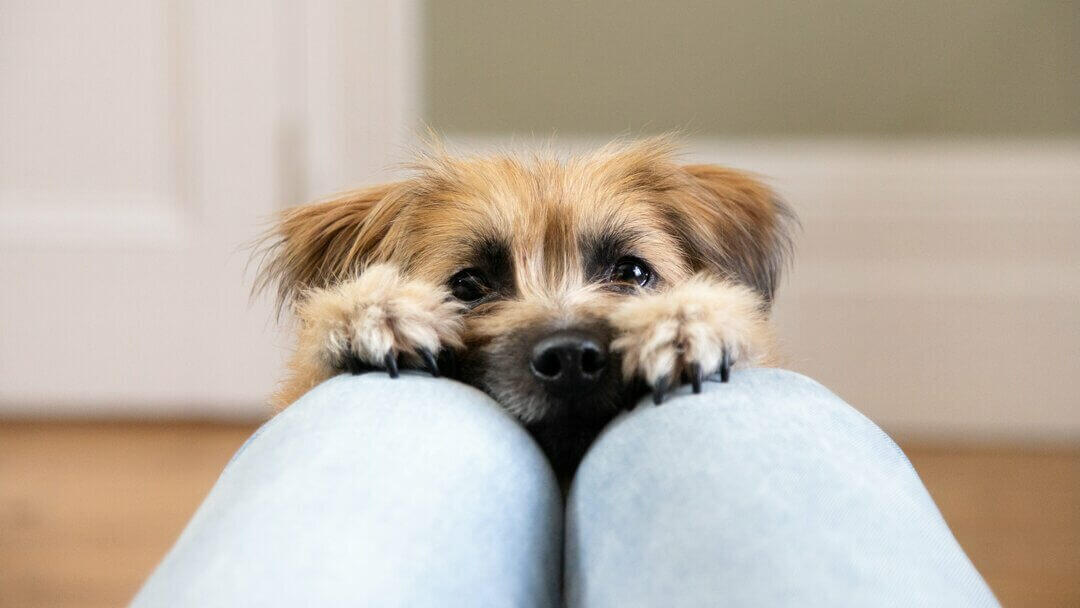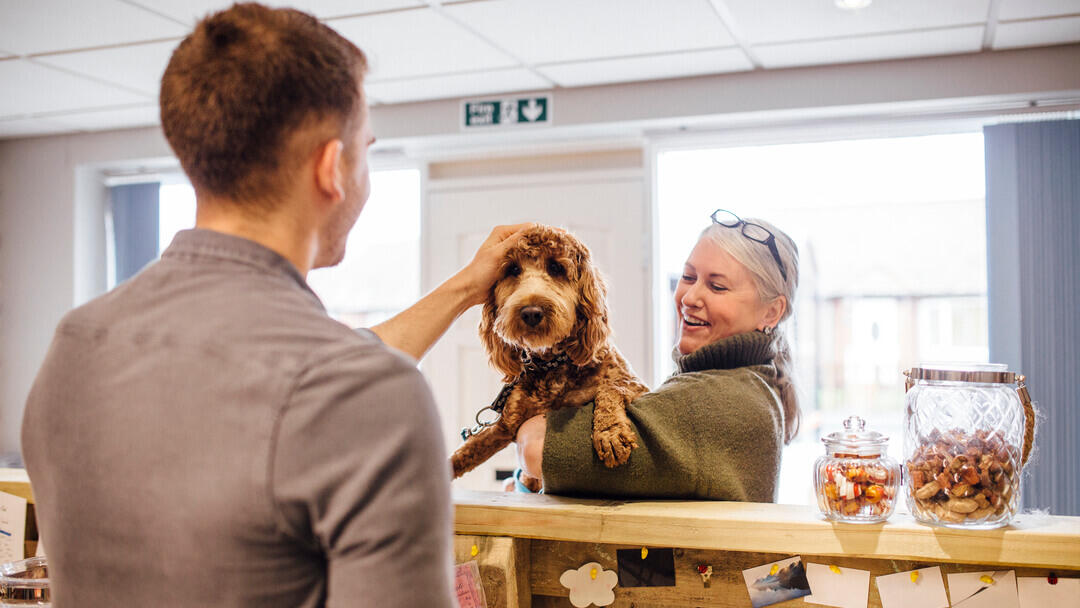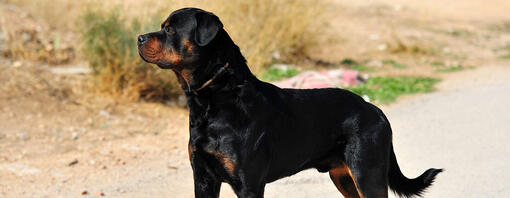
While some people prefer the convenience of smaller breeds, many dog lovers find the unique qualities of big dog breeds incredibly appealing. Their size and strength can provide a sense of security and protection, while still making excellent companions.
Of course, owning a giant breed comes with specific considerations, including the need for plenty of space. Regular breed-appropriate exercise is crucial to keep these large dogs happy and healthy. However, for those who can provide the necessary care and environment, a large dog breed can offer a truly rewarding and fulfilling experience.
Giant dog breeds are often misunderstood due to their size. These majestic creatures, when properly trained and socialised, can make wonderful companions. From the largest dog breed in the world to other impressive canine breeds, let's explore 18 of our favourite big dog breeds.
What is the largest dog breed in the world?
When it comes to the largest dog breed in the world, there are a few contenders depending whether you are judging on height standing on all four paws, height when standing on back legs, or weight! The Great Dane is generally recognised as being the largest breed in terms of height – but Irish Wolfhounds are worthy contender too.
Many of the livestock guarding breeds also come very close to these canine giants in size – and when they’re taking up room in front of the fire, who’s going to argue with an inch or two!
World’s Tallest Dog on Record
The tallest dog ever was a Great Dane called Zeus, standing at an impressive 1.12m from his foot to his withers when standing on all fours, and 2.26m (7 feet 5 inches) when on his back legs!
18 giant dog breeds you're bound to love
If you've got room in your home and on your sofa, and plenty of time for socialising, training and reinforcing your fences, a giant dog breed could be the perfect match for you. Keep reading for our top 18 big dog breeds.
1. Mastiff (English) - 72-80cm, 54-73kg
While males, on average, come in at around 78cm (31inches), the Kennel Club breed standard recognises that they are often taller but no longer give a height – just say that “size is desirable but only if combined with quality”. Still, the Mastiff is among the biggest dog breeds alive today - in both height and weight.
The Mastiff is a calm, gentle and noble dog that is devoted and loving towards their family - often thinking of themselves as a lap dog!. They are however indifferent or even suspicious of strangers - human or canine.
2. Irish Wolfhound - 71-79cm, 40-54kg
With an average height of 76cm (30 inches) and often much taller, the Irish Wolfhound is unmistakeably a giant. Unlike most sighthounds who are on the leaner end of the scale, the Wolfhound is both tall and broad.
Once they reach adulthood, this massive and shaggy-coated breed is usually a truly gentle giant, however as puppies and juveniles they are boisterous, clumsy and frankly, enormous. Despite this, few people seem to have only one Irish Wolfhound!
3. Saint Bernard - 70-75cm, 54-81kg
Few people are unaware of the St Bernard, and if you say ‘giant breed’ this is the one many people will bring to mind most readily. With a breed average height of 74 cm (29 inches) and a broad muscular body to match, they truly are a behemoth of a dog. The ‘Saint’ part of their name comes from their origins in a Swiss monastery at Great St Bernard Pass, high in the mountains. The monastery was a hospice and refuge for travellers, and though initially the St Bernard was used as a protection dog, they soon became useful as companions and rescuers.
The modern St Bernard still possesses the presence to ward off strangers harbouring ill intentions, though once introduced to someone as a friend they are affable and easy-going. Their main aim in life is to be a lap-dog, no matter their size!
Expect a dog that remains a lumbering clumsy puppy well into their third year, and while you have a choice in coat length, the drool is non-negotiable!
4. Newfoundland – 66-71cm, 50-69kg
Newfoundlands or ‘Newfies’ are another of the better-known giant breeds, particularly famous for their love of water. This passion is usually first seen in puppies who try to get in their water bowls, or repeatedly tip the bowl up so they can wallow in the puddle! On average, the Newfoundland is 60.5kg, and stands 68.5cm (27 inches) at the shoulders, making them a truly massive dog.
Their love of water should be no surprise - the Newfoundland originates from the island of Newfoundland, Canada, where they worked as sled and cart dogs pulling heavy loads, and as water dogs, retrieving heavy nets from the water (and of course, humans who fell overboard). To keep a Newfie truly happy, owners should be able to provide at least an occasional swim.
Their heavy, oily and weatherproof coat meant they could survive the extreme low temperatures and wind chill, even whilst wet, and their huge, webbed feet made them effective swimmers with great traction on wet, icy, slippery ground.
5. Dogue de Bordeaux – -68cm, 45-50kg
On the smaller end of the giant breed scale, the Dogue de Bordeaux or ‘Dogue’, also known as the French Mastiff, is nonetheless still a pretty hefty, sizeable dog. Known for their reddish fawn colouration and their smiling, heavily wrinkled face, this Molosser breed’s history is very mixed! From farm work, war dog, hunting dog and pit fighting, bull baiting dog and guard dog, and now most commonly, companion and show dog, the Dogue has turned a paw to most doggy roles in their time!
Dogue de Bordeaux have an average breed height of 63cm (24 inches), and average weight of 48kg, whilst still makes them an impressively large dog, but a little easier to house than many. Being on the smaller side, they mature at around two years old, and are more agile and faster, and will require more exercise and physical activity. Great for owners who want a big but still active dog. As with all giant dogs, good and ongoing socialisation is important.
6. Leonberger – 65-80cm, 30-50kg
The Leonberger is one of the more glamorous giant breeds, with their reddish gold coat and a striking black mask. The Leonberger was created by crossing St Bernards, Newfoundlands, and Pyrenean Mountain Dogs, with the aim of creating a majestic, lion-like dog.
Weighing an average of 40kg, and standing around 72cm (28 inches) tall, you’ll want a big home and bank balance to house this magnificent creature!
7. Anatolian Shepherd – 71-81cm, 41-64kg
The Anatolian Shepherd, as described by the Kennel Club, stands at 71-81cms (27-31 inches) high with a weight of 50-64kg. In their native land however, they are still a working dog with far more emphasis being placed on working ability than on appearance, and each area has its own preferences.
While recognised by both UK and US Kennel Clubs, these are still dogs with a strong history of protection against both animal and human threat to their own familiar people and livestock. Their nomadic lifestyle, often protecting livestock independently of any owner, meant they had to make their own call on what constituted a threat and take appropriate action. This means they’re a big, heavy and athletic, and a very tough dog to live with and train, and should be considered specialist, for those living on large, securely fenced properties with prior livestock guardian breed experience – and few visitors.
8. Neapolitan Mastiff – 65-75cm, 50-70kg
The huge Neapolitan Mastiff is a surprisingly quiet dog, and though often a little slow to react, this should not be mistaken for a lack of intelligence. They just like to think things through properly!
Famous for their heavy, loose skin falling in dramatic wrinkles, with the appearance of a dog wearing a skin several sizes too big, they still fully believe themselves to be lapdogs.
Standing around 70cm (27 inches) tall on average and weighing around 60kg, the Neapolitan Mastiff should be lean and hard under a loose skin, with breeders now attempting to scale back extreme wrinkling for the good of the breeds health. They have a hard, shiny coat that is surprisingly weather resistant, and comes in a variety of blues, black, fawn, brown and brindle.
Despite their size, as puppies the Neapolitan is very bouncy and active, and although they slow down as they mature, this is one of the more active giant breeds. They do need a decent steady walk, and plenty of training to be enjoyable to live with, and you really do have to like drool, because it will be everywhere!
9. Great Dane – 71-76cm (minimum), 46-54kg
One of the tallest of the breeds and frequently featured in the Guinness Book of Records for their height, the Great Dane is a well-recognised giant breed.
There is no upper height limit for Great Danes, but at around 18 months the minimum height for females is 71cm (28 inches), and for dogs 76cm (30 inches). On average they weigh around 50kg, and this should be a lean, fit dog, not a soft, overweight dog, as those long bones have a lot of work to do!
Family loving, goofy and slightly ridiculous even, (remember Scooby Doo was a Great Dane!) but their origins lie in Germany, as boar hunting dogs who were also capable of protecting the estates of the wealthy and noble. Keep this in mind if strangers enter your property, or if wildlife starts running - as your Great Dane certainly hasn’t forgotten.
10. Deerhound - 71-76cm, 36.5-45.5kgs
Though not the smallest of the giant breeds, possibly the lightest in weight, the Deerhound stands around 76cm (29 inches) tall on average and weighs about 42kg, with females being smaller and lighter and males being taller and heavier.
More recently bred to take down deer and hold them until a human hunter could finish the job, the Deerhound has written records going back 500 years or more. Their true original job was catching wolves, which survived in Scotland until at least 1680 and possibly into the 18th Century.
Tall and lean, resembling an oversized greyhound with a dense shaggy, somewhat wiry coat, and an aristocratic look that can turn to a goofy grin of pure silliness in seconds. They love their family and trusted visitors, but are generally standoffish with strangers, although never rude nor aggressive.
They do take time to mature and are large, clumsy, puppies for some time and will probably never have a reliable recall, but the mature sensible Deerhound is an excellent family companion for the sighthound-experienced home.
11. Bernese Mountain Dog – 58-70cm, 40-44kg
With a strong and sturdy build, it’s no surprise that the Bernese Mountain Dog has made the list of big dogs. Their substantial body is covered by a smooth and silky coat, making them large and loveable! Their name refers to where they were bred, ‘Bern Canton’, in central Switzerland.
These big dogs stand at around 58-70cm (22-27 inches) and are 40-44kg in weight. Though the Bernese Mountain dog is large, this breed is calm in temperament and super affectionate. If you have children, this is a great dog to have because of their social and protective nature but given their size, will need both training and a watchful eye.
12. Dobermann – 65-69cm, 32-45kg
These big dogs stand at 65-69cm (25-27 inches) and weigh 32-45kg. Dobermanns are powerful and elegant dogs who love exercise and vigorous walks so they’re a great breed if you have access to plenty of outdoor space.
By merit of their big size and their protective nature coupled with a neutral suspicion of strangers, they require experienced owners who have the time and space to train them. They also require early and ongoing socialisation along with management to ensure they’re safe and calm around other dogs.
13. Bloodhound – 58-69cm, 41-50kg
Bloodhounds are a well-known big dog, standing at 58-69cm (22-27 inches) and weighing 41-50kg. Their long, pendulous ears and wrinkly skin make them instantly recognisable and their bodies and limbs and built for stamina if not speed.
These big dogs have a gentle nature and are great with children. Bloodhounds are true family dogs and don’t like to be left alone.
As you can tell from their name, Bloodhounds need to have the opportunity to use their amazing nose so any training and exercise with this involved is one they’d love!
14. Akita – 61-71cms, 34-50kg
The Akita is a large dog that originates from Japan. Their energetic and strong bodies require lots of training and exercise – after all, they weigh a good 34-50kg and stand at 58-70cm (22-27 inches) tall. So, if you live in the countryside, an Akita may be a good dog for you.
Their powerful bodies are covered in plush fur which requires regular grooming. Akita's enjoy active walks but don’t expect too much noise from them as they are pretty quiet. These powerful dogs need an experienced owner due to their natural suspicion of strangers which may need to be managed throughout their life and their early and ongoing socialisation needs.
15. Golden Retriever – 51-61cm, 27-34kg
Golden Retrievers are not giants but are still pretty large dogs, standing at 51-61cm (20-24 inches) and weighing 27-34kg. Known for being a friendly dog, the Golden Retriever is a great family pet and is an ideal dog for inexperienced but energetic owners. They do require plenty of games and companionship and require long, active walks.
As their name suggests, these dogs love to retrieve – they’ll just about carry anything in their mouths! They do tend to have a sensitive nature, so being conscious of this is important when training them.
16. Giant Schnauzer – 60-70cm, 25-48kg
This giant dog with a characteristic moustache and beard, weighs between 25-48kg and stands between 60-70cm (23-27 inches) tall, depending on the gender.
With a strong and imposing look, the Giant Schnauzer is a natural watchdog who loves to use their voice! For the same reason, they can be a bit suspicious of other dogs and unexpected strangers so require extra training and ongoing socialisation.
This big dog likes vigorous walks and so is best suited to a country home with lots of space to explore.
17. Pyrenean Mountain Dog – 65-81cm, 36-41kg
The Pyrenean Mountain Dog is a giant dog with an immensely strong and heavy bodied dog with a thick coat. These dogs stand at around 65-81cm (25-31 inches) tall and weigh 36-54kg.
Despite their huge size, these dogs are very affectionate to their family but are likely to be very suspicious of strangers and unknown dogs and react accordingly. For this reason, they’re suited to experienced owners with plenty of space who can manage them carefully.
Interestingly, this breed was originally naturally nocturnal and many retain this instinct. They were originally bred to guard herds of cattle and flocks of sheep at night.
18. Borzoi – 68-74cm, 34-41kg
The Borzoi is a large dog but with a gentle nature. They stand at 68-74cm (26-29 inches) depending on the gender and with a weight of 34-41kg.
As a sighthound, the Borzoi is quietly affectionate with family, although sometimes aloof, and will alert them of any suspicious presence. For this reason, they might be more reserved around strangers and as sighthounds, are not safe around small furry animals. So, if you have any other pets, a Borzoi wiil need early socialisation with them along with ongoing care and management, or might not be the best fit for your household.
So, that's our list of top 18 big dog breeds! Want to find out more about different dog types? Read our article on 11 English and British Dog Breeds.


